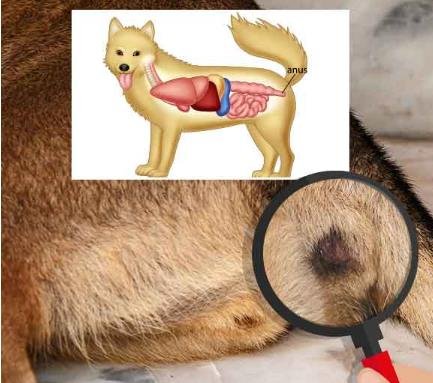
How to Express a Dog’s Anal Gland Safely and Effectively
Understanding the Importance of Anal Gland Expression
Dogs have two small anal glands located on either side of their anus. These glands produce a smelly, oily substance that can be used for marking territory or during defecation. However, some dogs may have difficulty expressing their anal glands naturally, which can lead to discomfort or even infections. Knowing how to express a dog’s anal gland can be an essential skill for pet owners.

Signs Your Dog May Need Anal Gland Expression
It’s important to recognize when your dog may need their anal glands expressed. Common signs include scooting their bottom across the floor, excessive licking or biting at the anal area, and a noticeable fishy odor. If you observe any of these behaviors, it may be time to check your dog’s anal glands.
Step-by-Step Guide to Expressing a Dog’s Anal Gland
Before attempting to express your dog’s anal glands, ensure you have the necessary supplies: gloves, paper towels, and a safe, calm environment. Follow these steps:
1. Put on gloves and have paper towels ready.
2. Lift your dog’s tail and locate the anal glands at the 4 and 8 o’clock positions around the anus.
3. Gently apply pressure using your thumb and forefinger to express the glands. Be cautious and gentle to avoid causing pain or discomfort.
4. Wipe the area clean with paper towels.
If you’re unsure or uncomfortable performing this task, it’s always best to consult a veterinarian or a professional groomer.
When to Seek Veterinary Assistance
While some dogs can have their anal glands expressed at home, others may require professional assistance. If you notice persistent problems, swelling, or signs of infection such as redness and pus, it’s crucial to seek veterinary care. A veterinarian can provide a thorough examination and appropriate treatment to prevent further complications.
Understanding how to express a dog’s anal gland can help maintain your pet’s comfort and health. Always prioritize your dog’s well-being and seek professional help when needed.
American Dingo animal behavior Budget Tips canine behavior Canine Care Canine Health DIY pet projects dog behavior Dog Breeds dog care Dog Care Tips dog exercise Dog Food Dog Grooming dog health Dog Measurement dog nutrition dog ownership dog potty area Dog Training Dog Wound Care Family Pets Hunting Dogs lipomas in dogs newborn puppy care obedience training outdoor pet care Pet Care Pet Care Tips Pet Health Pet Loss Pet Safety pet tips pet training Positive Reinforcement Potty Training Puppy Care puppy health Puppy Training Rabies in Dogs Temperature Monitoring Training Tips veterinary advice Veterinary Care Veterinary Tips
Sorry. No data so far.
Leave a Reply
You must be logged in to post a comment.